HealthPulls is a considerable blog which focuses on healthy Life style,healthy food,natural home remedies and human diseases.
Don't wanna be here? Send us removal request.
Text
How to get rid of acne scars, home tips
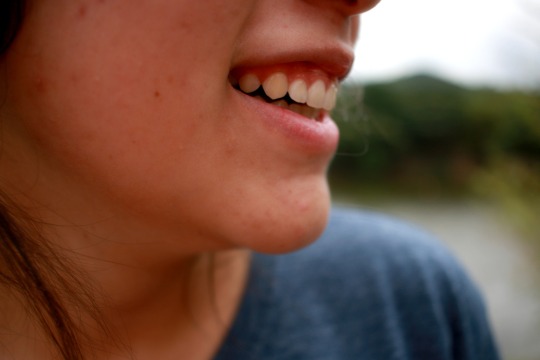
Acne leaves frustrating scars behind which look ugly, then the problem is how to remove acne scars? Don't worry. There is good news, acne scars can be treated. Lots of medication is available in different form such as topical, oral and parenteral, to resolve the acne and treat it completely but acne leaves scars. There are multiple reasons for acne, but the hormonal imbalance in teenagers is the most common cause. How these scars are formed? Scars are formed actually when your skin breakouts penetrate deep to the skin and damaged the underlying tissues. There are lots of scar types which can be formed, therefore before treating the scar, you must know the type of scars you have. Each type has a different type of treatment and responds to different treatment differently.
HOW TO GET RID OF ACNE SCARS? NATURAL HEALTHY TONERS
Multiple natural home toners are available over the counter, which actively removes the scars slowly and diminished the scar marks. These remedies are cheap, safe, harmless and for everybody. Various natural remedies are discussed below, you might follow any one of these to reduce the marks. 1- Potatoes Juice Potatoes are compacted with the high starch content which reduces the appearance of dark spots and fades the blemishes but acts gradually. It can be used in many forms such as boiled, cooked and raw form. A simple effective way is, grate a potato and get a juice via strain wit the piece of cloth. Apply it all over the face and leave it for 30 minutes. Then washed it. You may also take a potato slice and rub it gently over the acne scars to fade them. Used this procedure at least for two months because this is a natural method so it takes time to get results. Do this three times a day. 2- Aloe Vera gel Aloe vera has anti-inflammatory and anti-bacterial properties, so a unique toner to reduce blemishes, marks, and acne. This traditionally used tool is amazing in its action and easily available everywhere. There is no particular technique to use it. Take just a fresh leave of aloe vera and rub it on your whole face after washing it. Leave this application for 10 minutes and then washed it. If you are sensitive to direct use of aloe vera leaves, take aloe vera gel and mix it with two to three drops of tea tree oil for acne. Leave it for 30 minutes and then wash it. Do this method 2 to 3 times a day. 3- Lemon Juice Lemon is rich in antioxidants such as vitamin C and helpful for lightening every type of scars because it is a natural anti-bleaching agent. It removes the old dead skin cells and promotes cell growth. It is the cheapest way to remove PimplesScars or acne scars without any medication. Take a fresh lemon juice and soaked a cotton ball in this juice. Clean your face, rub on the spots with a cotton rib. Leave it for 15 minutes and then washed it. Do these two types a day. 4- Turmeric powder A unique ingredient for removal of acne scars has been used from ancient times. It has anti-inflammatory properties as well as healing properties. Curcumin is an active ingredient of turmeric powder, which helps to fade the scars. You can mix this turmeric powder with the lemon juice. Apply this mixture on acne scars and leave it for 15 minutes then wash it with warm water. You may also add honey as well. Repeat it two times a day. 5- Apple Cider Vinegar It lightens the dark pigmented areas of the skin due to having its acidity properties. It removes the dead cells, promotes collagen production and increases the healing properties. The method to use is, mix an equal amount of vinegar and water. Take a cotton ball and dip it in this mixture. Clean your face, apply this mixture on affected parts and leave it for 15 minutes. Then rinse it will water. Used it daily. Read the full article
0 notes
Text
Cyanotic Heart Disease, Symptoms, Diagnosis, Treatment, Complications
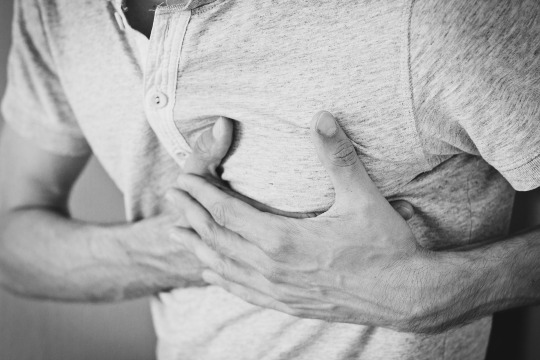
Cyanotic heart disease is the most common congenital heart lesions which are present in children at birth which result in low blood oxygen tension. Cyanosis means bluish discoloration of the skin and mucous membrane due to the de-oxygenated blood supply.
Causes of Cyanotic heart disease
The common cause of Cyanotic heart diseases are Tetralogy of Fallot Transposition of great arteries Ebstein anomaly
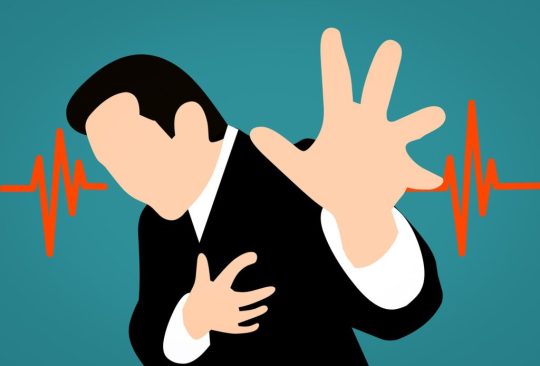
TETRALOGY OF FALLOT (TOF) The most common cause of Cyanotic heart disease is Tetralogy of Fallot, which is present in 5-7 percent of children and compatible with life. It is caused by environmental factors or genetic factors or both. The major's components of Tetralogy of Fallot are Ventricular septal defect (VSD) Atrial septal defect (ASD) Pulmonary stenosis Right ventricular hypertrophy (RVH) Overriding of aorta Due to the septum defect in the atrial wall or ventricular wall, blood is shunted from the right chamber to the left chamber and result in the mixing of blood. Due to pulmonary stenosis, there is an obstruction in the right ventricular outflow, which can lead to right ventricular hypertrophy in later life. Heart Disease causes, symptoms, risk factors & Treatment
SIGNS & SYMPTOMS OF TOF
Symptoms begin to appear during the first week of life due to the mixing of blood from right to left shunting but vary according to the severity of the disease. Labored breathing at rest. The baby may or may not be cyanosed at birth. Growth and development are retarded. Polycythemia Low oxygenation of the blood Clubbing of fingers and toes Heart murmurs Dyspnea at rest Children used the squatting position as it reduces the venous return and increases the resistance, thus decreases right to left shunt. Hypoxic, blue spells Failure to gain weight The infant becomes irritated, restless, cyanosed, hyperpneic and grasped breathing. Pulse is usually normal. Difficulty in feeding Heart size is normal, but parasternal heave may be present. Second heart sound is often single.
INVESTIGATIONS FOR TETRALOGY OF FALLOT
Following investigations and tests are done to make the diagnosis. Complete blood count This blood test shows the moderate raised amount of hemoglobin, RBCs, and hematocrit, depending on the oxygen saturation. ECG It shows right ventricular hypertrophy and right axis deviation. Chest X-ray Heart size is normal on chest radiograph. The characteristic finding of Tetralogy of Fallot is, the heart appeared as Boot shaped heart on x-ray. Apex is lifted. Moreover, pulmonary vascular markings are reduced and in 25 percent of cases, the aortic arch is right-sided. Angiography It is done to clarify the coronary artery and pulmonary artery anatomy. Echocardiogram It shows Ventricular septal defect (VSD), Atrial septal defect (ASD), Pulmonary stenosis, Right ventricular hypertrophy (RVH) Or Overriding of the aorta.
WHO IS AT RISK?
The mothers who are alcoholic, diabetics, have had rubella infection during pregnancy or age greater than the 40s, are at high risk of having the baby with this congenital heart defects.
WHAT ARE THE COMPLICATIONS OF TETRALOGY OF FALLOT?
In infants, this Cyanotic heart disease can lead to Brain abscess Cerebrovascular accidents Bacterial endocarditis Anemia Polycythemia Psychosocial problems Pulmonary regurgitation Management Of Tetralogy of Fallot Irregular heart rate Our aim is to prevent the hypoxia and to increase the blood flow lungs. It can be treated by medicines as well as by surgery. 1- Medical Therapy Electrolytes are maintained by infusion of fluids and keep hydrated to prevent the hemoconcentration. Blood glucose level should be monitored regularly to prevent the hypoglycemia. Temperature is maintained. Iron supplements are given to correct the exercise intolerance. Advised the patient's mother to feed the baby and increase the calorie intake to prevent the growth retardation. Bacterial endocarditis prophylaxis must be given. Drainage and antibiotics should be given to cure the brain abscess. Maintain oral hygiene. Counseling is also important for psychological problems. 2- SURGICAL THERAPY Open heart surgery is preferred for this type of congenital heart defects. VSD closure, ASD closure, creation of systemic artery to pulmonary artery shunt and opening of the pulmonary artery by open surgery are the best options to treat this congenital heart defects. Read the full article
0 notes
Text
Pulmonary heart disease causes, symptoms, treatment & complication
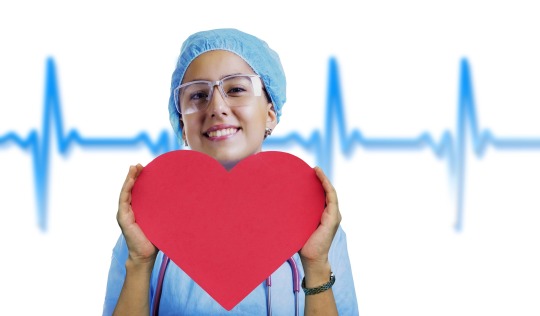
Pulmonary heart disease is the enlargement of the right ventricle of heart due to increase blood pressure and increase the resistance of the lung. It is also known as Cor Pulmonale. It can be acute or chronic. Acute Pulmonary Heart Disease Acute heart disease causes the dilation of the right side of the heart. Dilation is the stretching of the heart muscles of ventricle due to high pulmonary pressure. Chronic Pulmonary Heart Disease whereas chronic pulmonary heart disease causes the right ventricular hypertrophy. Hypertrophy is an adaptive response in state-of chronic illness. In chronic illness, in response to increased pulmonary pressure and increased pulmonary resistance, heart muscles have to work more forcefully. Therefore, muscles grow in thickens as well as in length to adapt to the increased pulmonary resistance. Due to pulmonary hypertension, small arteries in your lungs called pulmonary arterioles, and capillaries become narrowed or blocked due to high resistance to blood flow. This narrowing of the vessels make it harder for the blood to flow easily through the lungs, thus, raises the blood pressure within the articles of the lung. Due to pulmonary artery narrowing, pressure builds inside the heart's lower right chamber (right ventricle) due to an accumulation of blood. Thus, the right ventricular must have to work harder to pump this blood pool through the lungs and eventually causing your heart muscles to weaken.
CAUSES OF PULMONARY HEART DISEASE
Multiple factors cause this cor pulmonale, the most common causes are Primary pulmonary hypertension COPD Blood clots in lungs Sickle cell anemia Respiratory distress syndrome Kyphoscoliosis Sleep apnea Bronchopulmonary fibrosis Cystic fibrosis Pulmonary artery stenosis Pulmonary vein stenosis Interstitial lung disease Long term exposure to high altitude Mitral valve disease
SIGNS & SYMPTOMS RELATED TO PULMONARY HEART DISEASE
Some nonspecific symptoms begin to appear due to pulmonary heart disease depending on the acute and chronic state. As the disease is going to progress, the following symptoms are seen Dizziness Heart palpitations Raised JVP Fatigue Cyanosis Shortness of breath Abnormal heart sounds Third heart sound Wheezing Tachycardia Intercostal recession Ascites Pulmonary effusion Jaundice Enlargement of liver Enlargement of the heart HOW WE CAN diagnose THE COR PULMONALE? Some Investigations are made to diagnose pulmonary heart disease. Following are done, ECG Right ventricular hypertrophy, peaked P wave, arrhythmias are seen on ECG. Chest x-ray Prominent pulmonary vessels, right ventricular hypertrophy, right atrial dilation on chest Xray indicates pulmonary hypertension. Thrombophilia Screen This is done to detect the chronic deep venous thrombosis due to rise in C-reactive proteins etc. Complete blood test Cardiac enzymes, inflammatory mediators are seen on the blood test report.
TREATMENT PLAN TO CURE THE PULMONARY HEART DISEASE
Treatment for heart disease include Diuretics to decrease the burden on the heart Antibiotics to treat the infection Expectorants to improve the oxygen tension Digitalis to prevent the risk of congestive heart failure Vasodilators to ensure the blood flow to the heart Oxygen therapy to resolve the shortness of breath as well as prevent the hypoxemia Anticoagulants to prevent the thrombosis and venous embolism. Transplantation of lungs is another best option when above all techniques are failed to improve. Their dose, the duration is adjusted according to the condition of patient and severity of the disease.
COMPLICATIONS
If a pulmonary heart disease is undiagnosed or left untreated or progressed to chronic disease, it can cause some life-threatening complications such as arrhythmias, bleeding disorders, blood clots, right ventricular hypertrophy, right-sided heart failure, deep venous thrombosis, etc. Read the full article
0 notes
Text
How to get rid of back acne at home- 6 Best Ways
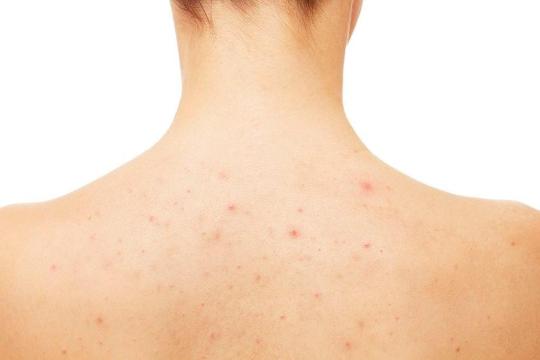
Back acne is the most common type of acne, almost all the people have this acne at any point in their life. Acne can happen at any age or at any part of the body. Don't be worry about them, it is treatable acne. Many people thought, how to get rid of back acne. Lots of medications are available which treat the acne on back. Some home remedies are also widely used against the back acne. How they are formed? Many reasons are there to cause of the acne on back, such as hormonal changes, unhealthy food, poor lifestyle, poor hygiene, genetics, drug reaction, stress, sweat, etc.
BEST HOME TIPS TO GET RID OF BACK ACNE
You can easily get rid of back acne by eating healthy food, changing lifestyle and by adopting some natural home remedies which are harmless and equally affective as other commercial applications. Back acne is a curable condition. You may get relief at home by using natural home tips. You can any one of the following way 1- Healthy food Your diet has a great impact on your body as well on your skin, especially if your skin is acne-prone. Pay great attention to your diet. You all have heard, you are what you eat. Unhealthy food triggers acne in acne-based skin. Recent research shows that food having high glycemic index such as white potatoes, rice, white bread etc worsen the acne. Your diet must have green vegetables, fresh fruits, fresh juices, lean proteins and plenty of water. 2- Sunscreen Use Choose your sunscreen carefully because greasy sunscreen worsens the back acne by clogging the pores. To protect the skin from the damage of solar radiation is very important. Use the best sunscreen which is an oil-free sunscreen and protect the skin by making a protective sheet over the face. 3- Take Shower Right After Workout A very common cause of back acne is letting the sweat on your body after the workout. Sweat and dirt on the skin after a workout trigger the acne. Therefore, take a shower as soon as possible after the workout. 4- Antibacterial FaceWash Your face Wash must have antibacterial and anti-inflammatory properties to fight against the bacteria on your skin. Wash your face after a workout to remove the dirt or dust. Also, wash your face before going to bed. Your hygiene matters a lot. 5- Tea Tree Oil A best natural antiseptic Tea Tree oil to remove the acne and reduce the inflammation over the skin. It has antimicrobial activities and helpful against the growth of the organism. It can be used by mixing with the aloe Vera gel, rose water, argan oil, almond oil or water. Don't use it in concentrated form. It gradually removes the blemishes and Rid of acne scars. 6- Don't Pick Always avoid picking the back acne or any acne. Picking the acne can spread the organism to the other parts of the body and causes the pimples formation as well as scarring.
PREVENTION FROM BACK ACNE
Some tips can be used to prevent back acne in the future. Some of them are Take a shower after a workout to wash the sweating and dirt Take green leafy vegetables, fresh fruits, juices to improve the skin texture and tone. Avoid junk food, dairy products or processed food. Drink plenty of water to stay hydrated. Don't scrub the affected area. Avoid the substance which irritates you. Don't pick or popped the acne because it can spread the organism to other parts. Do exercise daily to increase the blood flow to the skin. Avoid chocolates, coke or oily products Read the full article
0 notes
Text
Pregnancy Symptoms Week by Week | First Month Symptoms and Signs
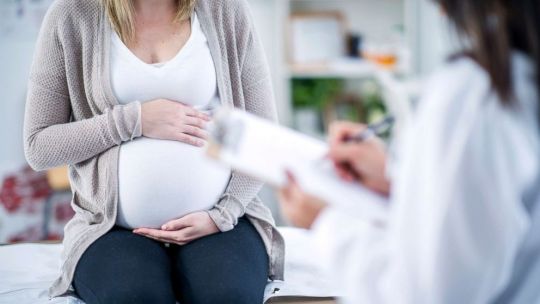
You could be pregnant? When did pregnancy symptoms begin to appear in all the pregnant women? Pregnancy symptoms start after the 2 weeks of conception and continue up to the last trimester. These Pregnancy symptoms week by week vary due to the fluctuations in the pregnancy hormones, internal changes in mother as well as changes in the baby. These symptoms are mild in the starting weeks and then become severe.
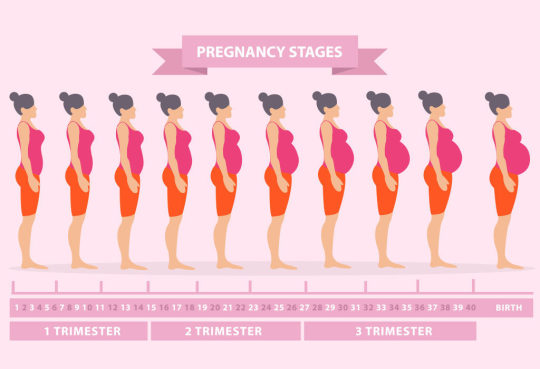
Image Source Some symptoms appeared soon and disappear late, while some appeared late and disappear soon. These Early symptoms are the sign of being pregnant and are the physical changes in your body due to changes in the body temperature, blood circulation, hormones concentration, and plasma proteins changes. As the baby is growing, female feel more uncomfortable and sleep difficulty due to the growth of the baby. During the second trimester, she feels more trouble than the first trimester and during the last trimester, she becomes more and more uncomfortable plus urges to deliver the baby. Some women depressed during the last trimester because of the fear of being delivered.
BRIEF DISCUSSION OF PREGNANCY SYMPTOMS WEEK BY WEEK
The pregnancy period contains almost 36 to 40 weeks and pregnancy symptoms week by week become more prominent since conception. Briefly, some symptoms are discussed during some weeks. They included 1- Pregnancy Symptoms At First 3 weeks At the 3rd week of pregnancy after the fertilization of ovum and sperm, physical signs begin to appear which are the clues of being pregnant. Implantation Bleeding As the fertilized ovum being to borrows into the wall of the uterus, light spotting occurs which can misunderstand the women with her normal menstrual cycle. Nausea, with or without vomiting

Image Source Nausea is a common complaint by all the pregnant women become hormones fluctuations or progesterone hormone surge that may be associated with or without the vomiting. Women become more sensitive for the smells, dust, allergy or such irritating smells that stimulate or trigger nausea. Nausea mostly occurs in the morning. If it is severe than usual, consult your physicians as soon as possible. Missed period Missed Period is a traditionally accepted hint for being pregnant which is confirmed by urine pregnancy test later on. But it is not so true, because there may be any irregularity in menstruation due to multiple reasons like a cyst, stress, anxiety, malnourished, etc. Therefore, some time periods are delayed whom women considered the pregnancy. Missed Periods during the whole pregnancy are due to the absence of FSH or LH hormones and the presence of progesterone hormone. Positive blood pregnancy test In some conditions like if you are at the risk for miscarriage, placental abruption or ectopic pregnancy, your physician can ask you to some for a blood draw or blood test. Blood tests can also detect smaller amounts of hCG than urine pregnancy tests. Thus, you may find out that you are pregnant or not sooner with the blood tests than you would with an at home test. Breast Changes Like other body changes, your boobs can start to get sore under the action of progesterone or estrogen hormones. Your nipples may darken more than usual as your body starts prepping to make milk. What is the size of your baby? The fertilized ovum in your body is very small and actually looks more like a group of cells than a baby. It could be seen by the naked eye if it were not inside your body or placed outside. Moreover, it is the size of the head of a pin and almost .0019 inches. Abdominal Cramps Some women may experience abdominal cramps or abdominal discomfort during the first three weeks of pregnancy. It is also a very commonly seen pregnancy symptom in pregnant women. 2- Pregnancy Symptoms At 6 weeks Fatigue You’re so drained because your body’s still getting used to your changing hormones. Pregnancy hormones put you more sleep and drowsy. Nausea. Nausea may be associated with vomiting or not, a common facing complains during this time. But such morning sickness doesn't just happen in the morning but can happen at any time which it stimulated. Sore breasts Breast is swollen and tender during 6 weeks of pregnancy under the action of the hormones released by the mother as well as my baby. Frequent urination Increased urination is also a common sign which becomes more common due to intake filtration. Gas and bloating Constipation, gas, bloating, abdominal cramps are commonly seen complaints during pregnancy. 3- Pregnancy Symptoms At 9 weeks There are many symptoms that present at the 9 weeks of pregnancy specifically. You and your baby are going through the many changes in the body due to the production of the hormones. Nausea with or without vomit At 9 weeks the level of human chorionic gonadotrophic hormone increases so u might be feeling more nauseous muddy and tired. It may be associated with vomiting or maybe not. Weight gain You are unlikely to be looked pregnant at 9 weeks because there are few body changes at 9 weeks. But some physical changes visible at the 9 weeks is weight gain. Morning sickness Many women experience the bout of nausea and vomiting which is called morning sickness during any time day or night it begins at 6 the week of pregnancy, peaks at 9 weeks and disappear at 16 weeks of pregnancy. Breast Tenderness Secondly breast tenderness at 9 the week is more significant. The most common cause of Breast tenderness before the period may be fluctuating the level of hormone. During this period estrogen and progesterone level changes which cause the dull and coarse pain in Breast at 9 the week of pregnancy. Frequent Urination Thirdly frequent urination is the most important symptom which appears at the 9th week of gestation because uterus size increases and the baby grow properly which causes the pressure symptoms. The uterus causes pressure on the bladder which increases the frequency of urination. Food Cravings Calories intake increases in pregnancy because the baby grows in the mother's womb and the baby takes nutrition from the mother. Therefore, the mother eats too much to full fill the requirements of herself and baby. So food craving increases in pregnancy which also results in weight gain at 9 weeks of pregnancy. 4- Pregnancy Symptoms At 12 weeks Entering into the 12th week of pregnancy when your baby has reached the size of an apricot. Some of the symptoms that you have been experiencing before may persist as u can still feel being queasy, anorexia, burping, but symptoms specific to this week can include: weight gain, skin hyperpigmentation, known as melasma, darker areolas around the nipple tender or sore breasts, Food aversions, Fatigue, Dizzy spells, Increased urination. They are described below Dizzy Spells Dizziness and lightheadedness can be the result of Low blood pressure or Low blood sugar. So to explain the underlying physiology to low blood pressure we have progesterone the key regulator here, which causes your blood vessels to relax and widen around 12 weeks pregnant, increasing the flow of blood to your baby, but slowing the return of blood to mother since every organ's blood supply is being slowed including the brain. This contributes to that light-headed, dizzy feeling. Another cause of dizziness during pregnancy is low blood-sugar levels, this can occur as a result of less food intake Skin Changes The hormonal surge during pregnancy leads to dark spots formation and over dark skin tone and especially acne during pregnancy, But the process will gradually reverse after pregnancy and melasma will disappear Breast Changes Tenderness and soreness in the breast are usual symptoms that will be encountered. To combat these: Cold packs can be used Wearing a tight bra can worsen the condition so bra of perfect size should be worn. Areola Changes Areola; the skin around nipples, turns darker as are the other parts of the body especially cheeks and forehead Food aversion Human chorionic gonadotrophins the hormone which can be really fruitful for your baby's brain but can make you feel nauseous all the time 5- Pregnancy Symptoms At 15 weeks Pregnancy symptoms week by week diminishes or becomes more severe. These all are due to hormonal changes produced by the mother as well as by fetus. Nosebleeds Epistaxis or nosebleeds symptom becomes evident at 15 weeks of pregnancy. It is due to a combination of the increased blood volume and sensitive nasal passages. Swollen gums When you are pregnant, Your gums are more swollen and sensitive now. You must take care of them by doing a brush daily. Also, go to a nearby good dentist for regular checkups. Increase Baby Size At the 15 weeks, the size of the baby is as big as a navel orange. The average 15-week baby weighs around 2.5 ounces and measures 4 inches. Increased Sex Drive 15 weeks is almost a 4th month, this is the time when your body gets used to the body changes and your energy back now. You feel more energetic and well, there is no nausea this week. If you’re not up to sex, it’s completely understandable 6- Pregnancy Symptoms At 18 weeks Here is the pregnancy symptoms of 18 week's in a future mom's Swollen hands or feet It is very very common pregnancy symptom seen in pregnant women mostly obese women. This swelling can be an annoying or disgusting pregnancy symptom. But it is common. If it is mild, don't be upset. If swelling becomes sudden or severe, call to your physician as soon as possible because it may be a sign of underlying pathology like edema, kidney malfunctioning, etc. Varicose veins Varicose veins are visible purple or blue veins in the legs that are swollen due to the extra pressure developed by the circulatory system. To cope with this, change your posture, do exercises as much as you can and avoid tight shoes and clothes. Sleeping difficulty As you are moving on, your baby growing more. You are feeling more and more uncomfortable during sleep. Baby Movements Baby kick is a pregnancy symptoms week by week getting stronger. Whether you have twins, triplets or a single baby, you feel the more precise and definitive sensation of baby movements. Baby's size at 18 Weeks At 18 weeks of pregnancy, the baby is as big as an artichoke. Baby measures about 5.6 inches long and weighs about 6.7 ounces now. The baby keeps growing quickly, as the pregnancy is moving ahead. As the baby grows, you need extra energy or food to nourish the fetus and you feel more hungry. Backaches Backache, very common pregnancy symptom week by week getting more stronger because your baby is putting a lot of the pressure on your body insides and causing more aches and the pains in your back.
Can you feel pregnant after 2 days?
Pregnancy changes begin to appear after one or two weeks when fertilized ovum has attached to the uterine wall. After 2 days of unprotected intercourse, you might feel nausea, vomiting or burning micturition because of the sex-related changes and hormones. You can feel the pregnancy changes when beta hCG hormone is produced by attached ovum. Read the full article
#PregnancySymptomsAt12weeks#PregnancySymptomsAt15weeks#PregnancySymptomsAt18weeks#PregnancySymptomsAt6weeks#PregnancySymptomsAt9weeks#PregnancySymptomsAtFirst3weeks
0 notes
Text
Type 1 Diabetes Causes, Symptoms & Complications Details
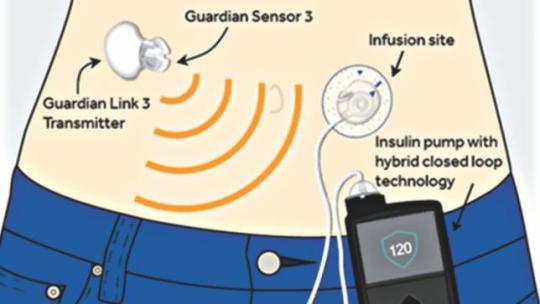
Type 1 Diabetes or juvenile diabetes is the high blood sugar level in the adults before 40s due to the absence of insulin hormone. Mellitus is a common type of diabetes mellitus that occurs in the adult. It is due to the absence of insulin hormones by the beta cells of the pancreas. Insulin is a hormone that lowers the blood sugar level by transporting it into the adipose tissues or muscles. Glucagon is the antagonist of the insulin hormone, as it increases the blood sugar level by moving it from tissues or muscles to blood.
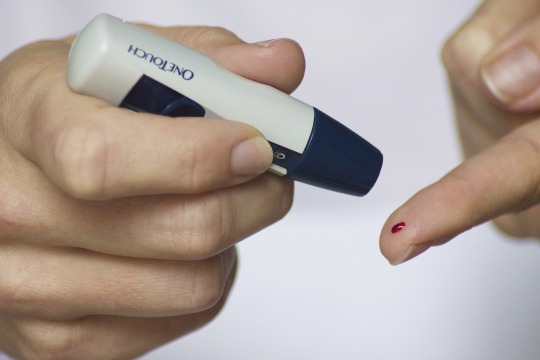
Type 1 diabetics suffered from increased thirst and increase hunger. Insulin administration is the best therapy to treat this type of diabetes and it can be obsolete by complete protection and therapy. Type 1 Diabetes Mellitus affects mostly before 40 years of age.
CAUSES OF TYPE 1 DIABETES MELLITUS
A lot of factors are responsible for type 1 diabetes mellitus like genetic factors, pancreatitis, a tumor of the pancreas, etc. These factors are responsible for type 1 diabetes. Some of them are Genetics Viral infection Environmental factors Pancreatitis Tumor of pancreas
ROLE OF INSULIN HORMONE
Destruction of beta cells produces little or no insulin. The absence of insulin puts the high blood sugar level. The pancreas' beta cells secrete insulin into the blood circulation. Insulin circulates in the blood, allowing the sugar to enter your cells or tissues. Insulin lowers the amount of glucose in your blood. As your blood sugar level declines, so does the secretion of insulin from your pancreas. If insulin is not present, the above mechanism will impair and glucose stays in your bloodstream. The role of glucose: Glucose is a main source of energy for all the cells that make up the muscles, tissues and other organs. Also used up for the workout. Glucose is the body comes from two major sources: liver and food Sugar is absorbed into the blood circulation, where it enters into the cells with the help of the insulin. Your liver stores extra glucose as glycogen form. When your glucose level is too low, such as when you have not eaten, the liver breaks down the stored glycogen into the glucose to keep the glucose levels within a normal range. Thus, glucose is stored as well as maintained.
SIGNS & SYMPTOMS
Type 1 diabetes signs and symptoms can appear suddenly and may include the following, Increased thirst or polydipsia Frequent urination or polyuria Bed-wetting in children who did not wet the * bed during the night in past Extreme hunger or polyphagia Unintended weight loss Anorexia Irritability or other mood changes Blurring of vision Fatigue and weakness Nerve impairment Amputation of leg Edema of hands or feet Kidney diseases Liver impairment
COMPLICATIONS OF TYPE 1 DIABETES MELLITUS
Type 1 diabetes complications can affect the major organs in your body including blood vessels, heart, nerves, kidneys, and eyes. Normal blood sugar levels can dramatically reduce the risk of many serious complications. 1- Nerve Damage or neuropathy Additional Glucose damage the blood capillaries that nourish the nerve. Due to malnourished of nerve, tingling, numbness or burning can produce. 2- Kidney Damage or nephropathy Extra glucose damaged the tiny blood vessels that filter the wastes of your body. Diabetes Mellitus can damage this fine filtering excretory system. Severe damage can lead to kidney failure or irreversible end-stage kidney failure. 3- Heart and blood vessels damaged Diabetes drastically increases the risk of various CVS problems, including chest pain or angina, hypertension, heart attack, heart failure, stroke and narrowing of the arteries (atherosclerosis). 4- Eye damage or Retinopathy Diabetes Mellitus also damage the blood vessels of the retina (known as diabetic retinopathy), potentially causing Blindness. Diabetes also increases the risk of other serious vision conditions, such as cataracts and glaucoma. 5- Pregnancy Complications High blood sugar levels or type 1 diabetes can be harmful to both the mother and the baby. The risk of miscarriage, stillbirth and birth defects increases when diabetes is untreated. Diabetics mothers are at a high risk of diabetic ketoacidosis, retinopathy, preeclampsia
What is the difference between type 1 and type 2 diabetes?
Diabetes mellitus is of two types i.e type 1 Diabetes and type 2 diabetes mellitus. What is the difference between type 1 and type 2 diabetes mellitus? The major differences are Type 1 occurs before the age of 40s, meaning it affects adult life. While type 2 occurs after the age of 40s. Type 1 occurs due to deficiency of insulin hormone, while type 2 is actually an insensitivity of insulin receptors. Treatment of type 1 is insulin therapy and type 2 needs just weight loss, dietary restrictions, and exercise.
What is type 1 diabetes and how do you get it?
Type 1 diabetes mellitus affects the adults before the age of 40s, due to the autoimmune destruction of beta cells or deficient produced of insulin. Type 1 diabetes also known as Juvenile Diabetes. Due to lack of insulin hormone, blood glucose level remains elevated and extra glucose begins to deposit in the peripheral organs. Therefore, the main purpose to get rid of it is to lower the blood glucose level. Insulin therapy is a best-recommended treatment for diabetes. Insulin tablets or injections are given to the patients which store the blood glucose in muscles and keep it balanced.
What are the first signs of Type 1 Diabetes?
Type 1 Diabetes mellitus is a disease of youngsters before 40s, due to decreased production of insulin hormone which is the most important glucose-lowering agent in blood. When an individual develops glucose in early stages, he begins to feel a few symptoms such as fatigue, restlessness, exercise intolerance or confusion. These are general symptoms which are mild initially and are not much suggestive, therefore, diagnosis of diabetes mostly late occurs. When the patient checks his blood sugar level, diabetes is confirmed because random blood glucose is greater than 200mg/dl.
Is Type 1 diabetes serious
Diabetes Mellitus is not much serious if it is diagnosed early and treated early. If the patient is taking proper insulin therapy 0.75 to 1.0U/kg daily, along with the proper dietary care, it can be cured. Diabetics diet should have 55% carbs, 30% fats (without cholesterol) and 15% proteins. You should quit refined sugars, salty food and smoking to minimize the risk of heart attack or pulmonary effusion in the future. The prognosis of type 1 diabetes is good, mostly patients recover with proper diet and insulin therapy.
How long does a person live with type 1 diabetes?
Men suffering from diabetes have a life span of almost 77 years when we take life expectancy in a healthy individual 88 years. While comparing the same in women the gap is almost 15 to 20 years. Life expectancy reduces fast when a person is noncompliant and develops complication earlier.
Can a child with Type 1 Diabetes live a normal life?
Proper doses of insulin administration to the highly susceptible child can prevent or delay the onset of diabetes. Diabetes in children can lead to some complications like retinopathy, nephropathy, and neuropathy. But these complications occur after 10 to 15 years of initial disease. Almost 100% of the children of Diabetes Mellitus have retinopathy in the future. Some may have myocardial infarction and stroke in the future. Read the full article
0 notes
Text
Early Pregnancy Symptoms, First Signs you might be Pregnant
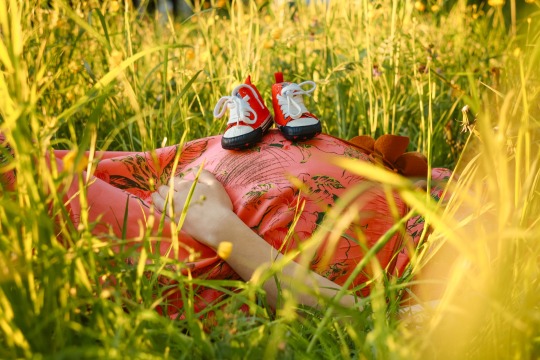
Early pregnancy symptoms begin to appear at the 4th week of fertilization. These symptoms appear in almost all the pregnant women but their duration, intensity, and severity may vary during the first trimester, the second trimester of your pregnancy as well as third trimester. Changes are more crucial in the first and third-trimester Pregnancy. Pregnancy is a time period of 250 days or 40 weeks. These pregnancy symptoms vary from week to week or month to month according to the size and growth of the baby. Why these early pregnancy symptoms are important? Why they appeared in pregnant women? These all are normal? The answer to these questions are here; These symptoms appeared in the body of pregnant women due to hormonal variation and flood of the pregnancy hormones. These are important because they appear in almost all women during pregnancy. If they are mild, this is normal. If these are severe in intensity, should consult the doctor as soon as possible, because the might be the result of other underlying pathology.
EARLY PREGNANCY SYMPTOMS OVERVIEW
After one or two weeks of conception, some physical changes begin to appear in the pregnant women body that gives a clue of being pregnant. These changes are mild normally but should be consulted in severe cases. Some important changes are discussed below 1- A Missed period This is traditionally accepted early pregnancy symptom which women considered being pregnant but it is not so true. The reason is menstrual cycle may be irregular for a week. Therefore, if you have missed your monthly cycle then go for the pregnancy test to confirm it. 2- Nausea & Vomiting

Image Source It is a very important pregnancy symptom which occurred in almost 95% pregnant women. Nausea may be associated with vomiting or not. These are due to fluctuations in hormones balance. Nausea may occur mostly on the morning and trigger by the strong smell, pungent smell or dust. In a mild case, it is neglected, but if it is severe, you should consult your health care provider. 3- Breast swollen & Tender Pregnancy hormones variation and prolactin hormone concentration makes the breast swollen and tender. Nipple becomes enlarged and areola (pigmented portion around the nipple) become more pigmented. Size of the breast also increases due to the production of milk. This is also a very common early pregnancy symptom seen in pregnant women. 4- Abdomen Enlarged As the baby begins to grow and start occupying the space, abdominal fat is pushed forward. Abdominal size is not much larger in the first trimester, but become more prominent during second and third-trimester Pregnancy, who called baby hump. It is also included in early pregnancy symptoms. 5- Mood Swings The flood of the pregnancy hormones in your body in early pregnancy can make the women unusually more emotional and weepy. She can't tolerate the situations as she is not emotionally stable. She needs extra attention or support by his partner. Mood swings also are a common symptom, especially in the first trimester. 6- Headache

Image Source You heard headache is very common in pregnant women due to increase blood circulation and hormonal variation which triggers the headache. If it is constant and increasing gradually then consult your physician. Do not use any medicine without the prescription of your doctor. 7- Fatigue This is also added in the early pregnancy symptoms because progesterone hormone level is on its peak. Due to the high level of progesterone, low blood glucose level and increase circulation of blood make the pregnant women more sleep. She feels more tiredness and fatigue by doing little work. 8- Constipation Constipation is also another common early symptom of pregnancy which become prominent during the second trimester and third trimester. An increase in the progesterone hormone causes the food to pass more slowly through the intestines which can lead to more absorption of the water from it. Hard or solid stool left behind which passes out with difficulty and cause constipation. If it is severe then consult your doctor, otherwise, drink more and more water and stay hydrated.
Why I do feel I'm pregnant, it is not?
There are some physiological changes which are the evidence of being pregnant. These are nausea, vomiting, breast soreness and tenderness, motion sickness, morning sickness or increase smell sensation. These physiological changes are due to fertilization of egg and sperm and attachment of fertilized ovum. Read the full article
0 notes
Text
Is Early pregnancy spotting Safe at 4th week?
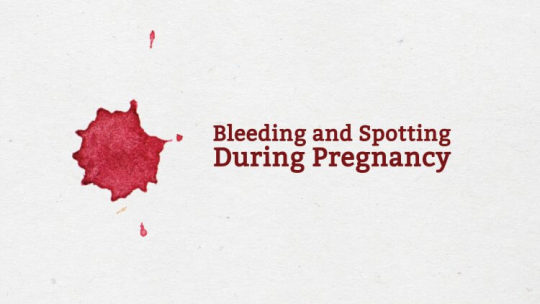
Early pregnancy spotting is a common problem in almost 20% of pregnant women during the 12 weeks of pregnancy. It is not limited to any specific month but can occur during any time of the whole nine months. It is not an alarming sign in a mild case because it is normal. If it is more than the normal and persistent, consult your doctor. What is the mean of early pregnancy spotting or what is it?

Image Source Early pregnancy spotting is actually a bloody discharge from the vagina after the conception. It can occur at any time and it is normal in mild cases. This Bleeding that occurs early on the pregnancy is usually lighter in flow than the menstrual period. The color of the discharge often varies from pink to red to brown in the spotting.
Difference between spotting & pregnancy
One important thing how you can differentiate the periods from spotting? The main key points are in below which tell the main differences. In the start of every menstrual cycle, if two tablespoons of blood are released, it is the spotting. Spotting can occur at any time of the period. Another difference is the color of the blood. spotting usually contains light brown blood, While the period blood can have ranged in colors. Spotting can occur between the periods, during the pregnancy, after the sex, or after the ultrasound examination. Periods occur once in a month.
Causes of Early Pregnancy Spotting
1- Implantation Bleeding Implantation bleeding is the most common cause of the spotting early on the pregnancy. Implantation bleeding occurs when the fertilized ovum attached to the uterine wall. When this attaches, it triggers the light bleeding or spotting before women confirmed her pregnancy. But sometimes women misunderstood this spotting with the normal menstrual bleeding. 2- Sexual intercourse Sexual intercourse after the conception may put pressure on the uterine lining and prone to bleed under the pressure. 3- Heavy lifting It is also the commonly seen cause of spotting during pregnancy. 4- vaginal ultrasound During the vaginal ultrasound, insertion of the tube through the vagina can cause the rupture of the blood vessels in the case of a cervical polyp. 5- excessive exercise Heavy or excessive exercise also increases the risk of bleeding during pregnancy. 6- Cervical Polyp Early pregnancy spotting might be the cause of the cervical polyp which is abnormal but harmless growth of the cervix. There are more chances to bleed this polyp during pregnancy due to hormonal imbalance or high estrogen levels. New blood vessels are also formed around this growth during pregnancy, which may be ruptured. There is also some reason for early pregnancy spotting but they are not much common but still exist. These conditions may lead to a lethal phase. They included Miscarriage Ectopic pregnancy Intrauterine demis Molar pregnancy
Symptoms of Early Pregnancy Spotting
There are some symptoms related to spotting or bleeding that pregnant women might be experienced. These symptoms are may be due to significant blood loss. Mild vaginal discharge Increased fatigue Excessive thirst Dizziness Fainting A rapid pulse rate that increases when you stand up If symptoms gradually become more progressive and bleeding becomes more severe, don't neglect it. Call for your health care provider and start your treatment as soon as possible to save the life of both mother and baby. Because it can be the result of any underlying disease or miscarriage. If it is mild, there is no alarming signal and stay calm then. Read the full article
#CausesofEarlyPregnancySpotting#Differencebetweenspotting&pregnancy#Earlypregnancyspotting#SymptomsofEarlyPregnancySpotting
0 notes
Text
Tested Healthy Snacks for your kids on the go
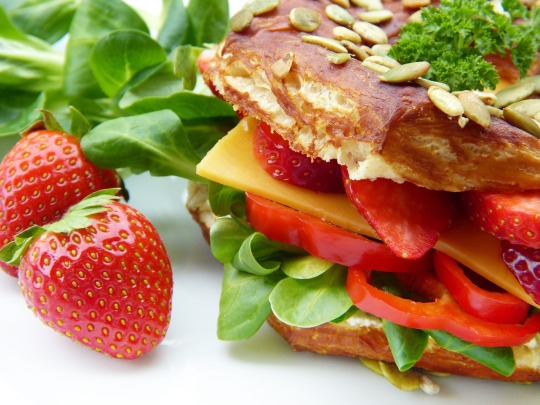
Are you confused about choosing healthy snacks for your kids? Snacks that are essential for the growth of kids? Instead of choosing snacks that only fill the stomach everyone prefers to choose snacks that are also nutritious and have health benefits. Best Healthy snacks may help in kid’s body and brain development as well as help- them to meet their energy requirements. So choosing a healthy snack may give your kid enough nutrients necessary for building their body mass. Here is a list of some healthy snacks for kids
Best healthy snacks for your kids
Here are the 6 Best Healthy Snacks for your kids that are not only enriched in nutritive's but also the source of multi-vitamins.
1- Oats/oatmeal
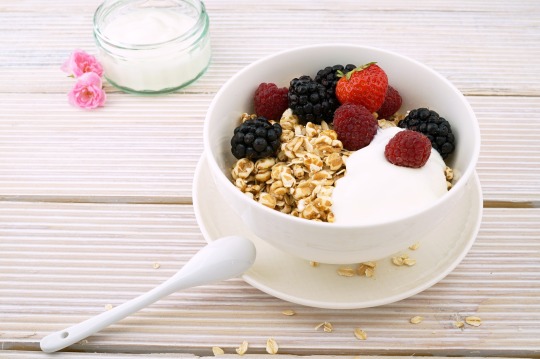
Oats/oatmeal is one of the healthy snacks for a kid that is rich in nutrition (vitamins, fibers and, minerals) and low in fats. As oats are high in nutrition they are very helpful for the growth of kids. Oats is also a good source of energy so they are helpful in kids for meeting their energy requirements. The presence of multivitamins like vitamin B-6, vitamin K, and vitamin E is essential for growth and development of your kids if you add milk to oatmeal it adds some extra proteins for your kids.
2- Peanut butter

Peanut butter is not only delicious but also a healthy snack for kids. Peanut butter is a good source of protein. And even a small serving contains a lot of important vitamins and minerals. As peanut butter is also rich in fat it helps children to have a proper weight and also helps in muscle build. Eating peanut butter daily can keep energy levels high which helps kids to stay active in all activities.
3- Cheese

Calcium is essential for building bones and teeth? So how you can choose healthy snacks for kids that include calcium? Here comes the cheese in the list of healthy snacks for kids. Cheese is made from milk which is a rich source of calcium, having calcium makes bones stronger as well as prevents many teeth problems. So Calcium is necessary for kids especially in their developmental years to help them grow strong and grow faster.
4- Yogurt
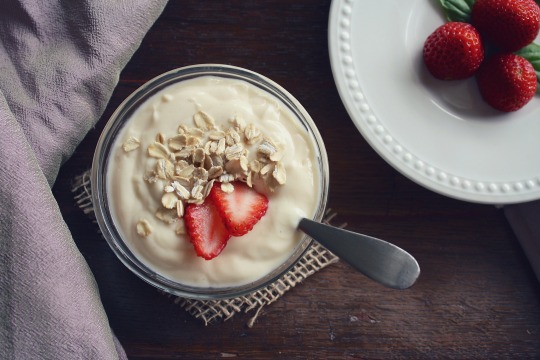
Yogurt is the best healthy snack for kids because it is a rich source of nutrients. Yogurt provides our body calcium and protein. Calcium is necessary for bones and makes bones stronger. While protein forms muscles and strengthens skin and bones. Yogurt also provides vitamin D which is essential for growth and development and kids. Yogurt also contains live bacteria which is helpful for the digestive system.
5- Nuts
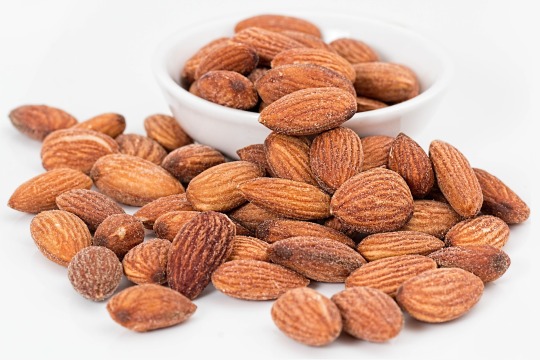
In the list of healthy snacks for kids, the next considerable snack is nuts. Nuts are full of nutrients like vitamins, minerals, healthy fats, and proteins which help children in development and growth. You can also use nuts in different recipes to increase the overall nutrients. Almond is a source of calcium and vitamin E. Almond helps in the development of your brain and sharpens it. Walnut is also rich in vitamins like vitamin B1 and B6 which helps to develop your kid brain tissues. Walnut also helps in improving the kid’s memory. Hazelnuts are rich in vitamins which help in producing healthy red blood cells.
6- Pieces of fruits

You can mix different fruits to make a healthy snack for kids. Fruits are an essential source of minerals, vitamins, and fiber. So using different fruits salad as a snack provides many health benefits. Fruits promote good health and protect against diseases. Fruits strengthen the kid’s immune system. Eating fruits on a regular basis eliminates the possibility of vitamins and minerals deficiency. Fruits provide vitamins like Vitamin A, B1, B2, B6 and C to the body. So if you want your kid to be healthy and strong you should necessarily include fruits in their diet.
Conclusion
Want to choose snacks healthy snacks for your kids that are rich in nutrients? Here is a list of snacks which are both healthy and delicious. Oatmeal is one of the healthy snacks for a kid that is rich in nutrition (vitamins, fibers and, minerals). Peanut butter. Cheese. Yogurt. Nuts. Fruits help in proper growth of children. Read the full article
#BestHealthySnacksforyourkids#HealthySnacksforyourkids#HealthySnacksforyourkidsonthego#TestedHealthySnacks
0 notes
Text
Home Remedies for Acne- a Way Towards Flawless Skin
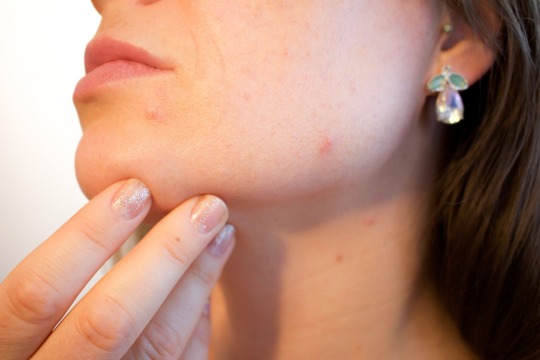
Skin breakouts- this thing has broken the hearts of many people, especially young ladies. Acne is a common yet painful phenomenon that numerous people face around us and they use different Home Remedies for Acne which are harmless, cheap and safe to use. What is the best treatment of acne? Many people ask this question out of extreme frustration. These small bumps, white +blackheads, scars, and inflammations even if they don’t appear that bad, make you feel awful about yourself. Many people also spend huge money in order to find the fastest way to get rid of this ACNE. Unfortunately, all these expensive medical treatments don’t prove valuable in many cases. Our write-up is dedicated to all such irritated people. We believe a lot of our health issues have natural treatments that are actually effective. Similarly, there are many Home remedies for acne as well. What these remedies are? Read on to know more about them:
Effortless home remedies for acne
There are many home remedies that you can use to treat your acne. However, we are going to discuss a few of our favorite natural acne remedies. These are very simple to try. We are sure everyone can access these ingredients easily. Before proceeding, we would like to mention one important thing. Not all skin types are equal. Similarly, any remedy that worked the best on others’ skin may not necessarily work the same on yours. So, what you should do? You should keep exploring and trying various remedies. Once you find the best one that suits you the most, just stick to it.
Aloe Vera- a plant to treat acne
Aloe Vera- we would call this plant the magical one. Why? The reason behind is its numerous uses. Its gel contains tremendous benefits for our skin, hair, and overall health.
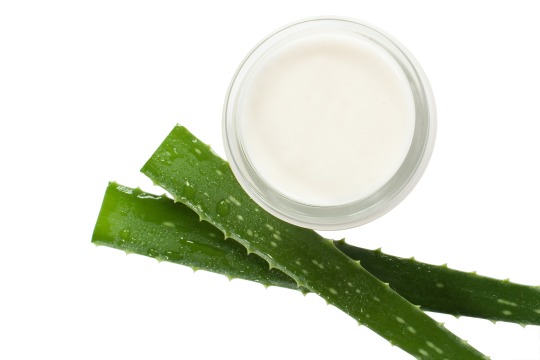
Likewise, aloe Vera gel can be of great help to treat acne. It is antibacterial and anti-inflammatory in nature. Thus, it can significantly decrease your acne while helping you to prevent it in the future. In order to see the improvement in overall skin texture and acne problem, you should keep using it for weeks. The good thing- it has just zero side effects, unlike other expensive medicine you would see in the market. Its method of application is very simple. You can either purchase products with aloe vera or take the whole plant. In the second case, you would need to extract its gel and apply a thin layer on the skin.
Honey- natural home remedy for acne
The history of using honey to treat skin problems is very old. It is not a new thing that people are getting benefit from this amazing gift of God.
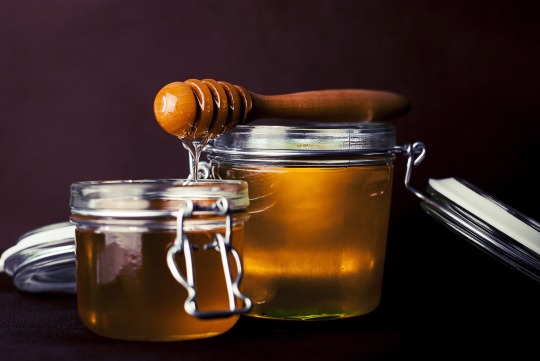
How can it help in treating acne? Well, it is antibacterial and antioxidants. Honey with the help of these two properties keeps your pores clean while healing acne wounds quickly. In this way, people who worry about clearing up their acne fast can get help from honey. Its application is also very simple. You can either apply it directly on acne spots or on the whole face. You can also make some other face masks by adding other natural ingredients with honey. Green Tea- a natural ingredient to clear skin We all know the health benefits of taking green tea. But, let us tell you, it is also possible to get rid of your stubborn acne using this tea. Now, you must be wondering, how does green tea help in clearing skin? Well, the answer is very simple. It clears your skin by removing debris and other waste material. Once your pores are open and clean, you would not be vulnerable to acne anymore. You can apply green tea extracts on the face.
Conclusion
Your skin tells a lot about your health. A clean and glowing skin not only looks good but also boosts your confidence. However, you should not just go crazy in order to attain flawless skin instantly. Rather, it is important to opt for effective and gentle treatments. In this post, we have discussed a few most effective and easy home remedies for acne. These are easily accessible as well. Yet, the trick is to be consistent. You cannot expect anything to do magic over the night. Keep applying these ingredients for a few weeks to get the requisite outcome. Read the full article
#clearinguptheiracnefast#fastestwaytogetridofthisACNE.#naturalacneremedies#Whatisthebesttreatmentofacne
0 notes
Text
Gestational diabetes diet- what to eat to stay healthy
Gestational diabetes diet involves such a diet that not only gives you energy, nutrients but also controls your blood glucose level during pregnancy READ MORE

#gestational diabetes#gestaitionaldiabetesdiet#diabetes#pregnancydiabetes#diabetespregnancy#gestationa#diabetesdiet
1 note
·
View note
Text
Gestational diabetes diet- what to eat to stay healthy
Gestational diabetes mellitus is diabetes in pregnant women, having a high blood sugar level. A Gestational Diabetes Diet is very important to know, to control the blood glucose as it may cause many serious problems like a too large baby, macrosomia, premature delivery, and neonatal death. Women can control gestational diabetes by taking a healthy diet or doing healthy exercises READMORE
0 notes
Text
GYM Workouts for men to Improve their Lifestyle
HealthPulls
Do you have enough motivation to indulge in some powerful fitness routine? Then, our blog has some top gym workouts for men that have the potential READ MORE

#workout#workoutfromhome#health & fitness#gymmotivation#gymlife#gym#workout for beginners#workout for abs#workoutformen
0 notes
Text
Home Remedies for Acne Scars Removal- Say Hello to spotless skin
HealthPulls
Are you losing confidence because of your acne scars? Then it is the right time to remove them. Know about miraculous Natural home remedies for acne scars. READ MORE
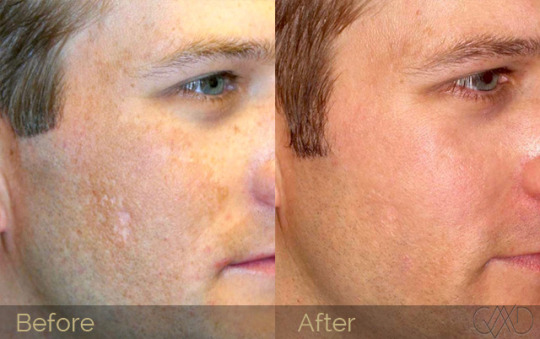
0 notes
Text
How diabetes mellitus occurs? Detailed information regarding the occurrence
HealthPulls
Diabetes Mellitus is a group of metabolic diseases in which blood sugar remains high due to the absence of insulin or insensitivity to present insulin. It can occur at any age or can affect many people, especially to predisposed persons, READ MORE
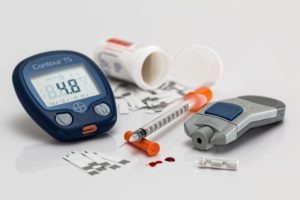
0 notes
Text
Is Early pregnancy spotting Safe at 4th week?
HealthPulls
Early pregnancy spotting is a common problem in almost 20% of pregnant women during the 12 weeks of pregnancy. It is not limited to any specific month, Early pregnancy spotting or vaginal bleeding of light brown color at the 4th week of conception is a sign of . Read more
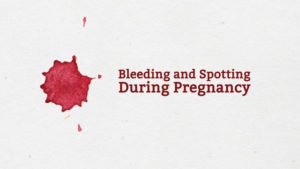
0 notes
Text
How to Remove Pimple Scars, for Clearer Skin
HealthPulls
To Remove Pimple Scars is one of the major problems of 90% of the women around the world, as every woman want to have a clear glowing skin free from spots and scars .This article described some easy and natural ways to remove pimple scars from the face and these steps are so simple that everyone can easily adapt..READ MORE

#pimples#pimplecare#pimplesolution#remove pimples#skincare#pimplescars#removepimplescars#pimpletreatment#homeremedies#aloeveragel
0 notes